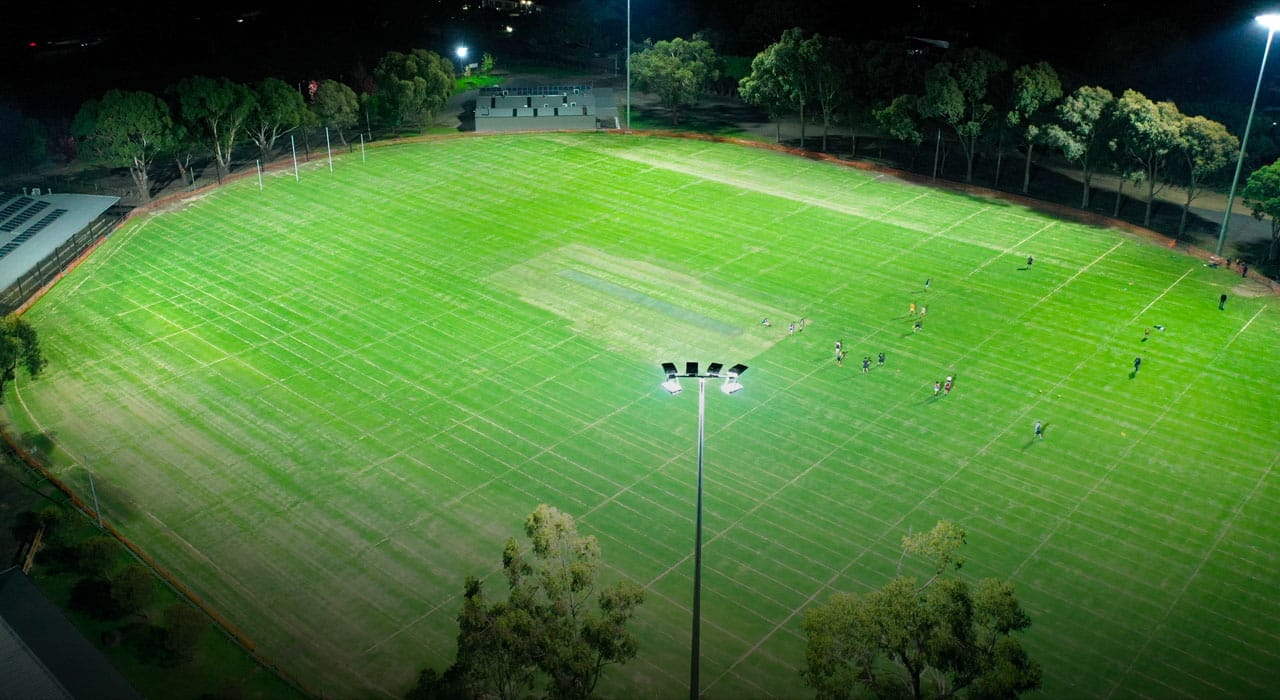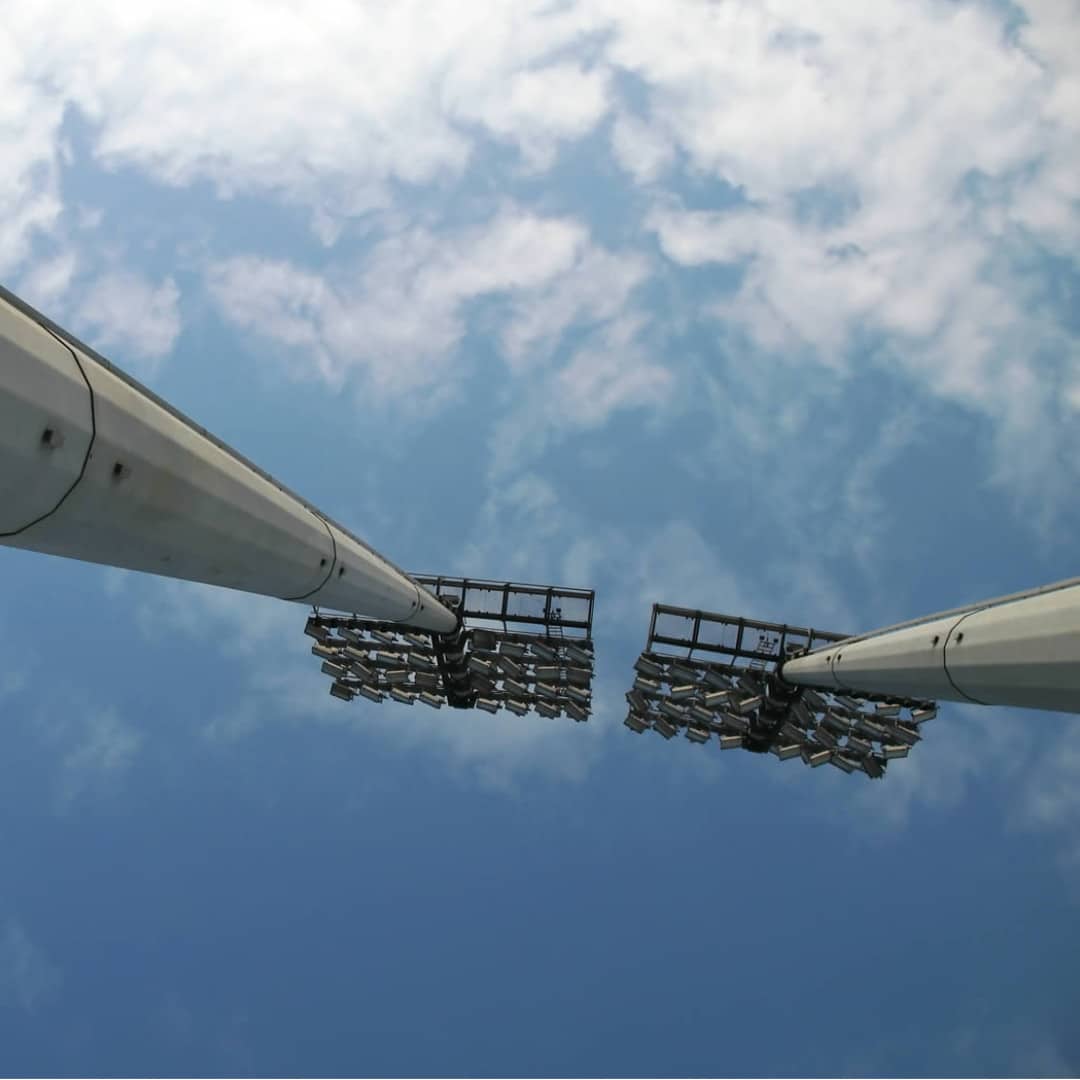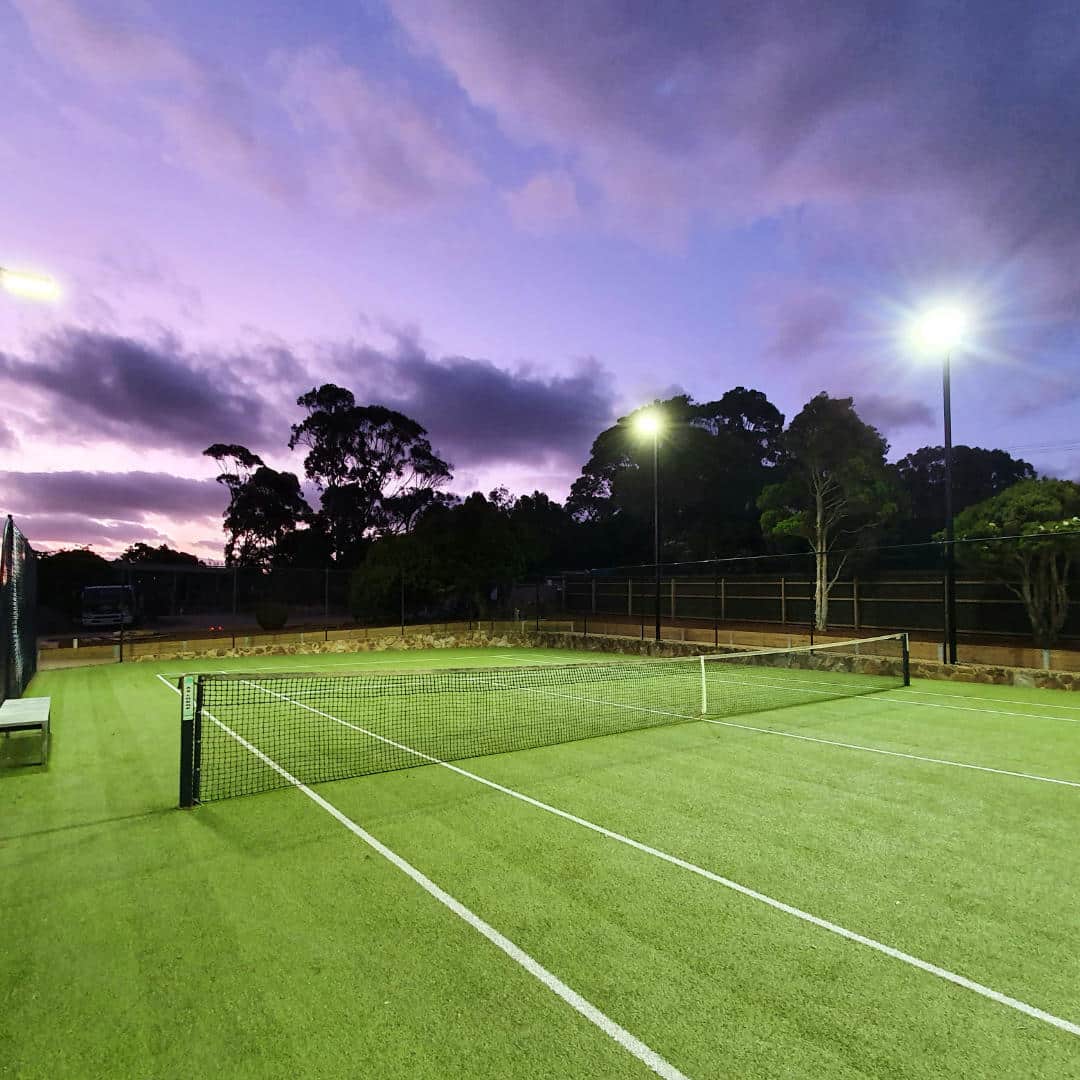
When considering changing lights to LED one of the first considerations should be if the poles can be reused. It’s important to note that this is not, or should not, be a compromise. Done correctly, there is no downside to reusing the poles and can often allow you to direct the savings to other projects like improving playing surfaces, increasing light levels etc.
There’s a number of factors involved but the benefits certainly make it worthwhile to consider - cost, disruption and time scales.
The poles are a considerable component to the cost of a lighting project and when factoring in installation, can amount to 40% of the overall figure. Being able to eliminate this with a retrofit can be the difference between doing the job or not. By having someone previously doing footings, setting up the poles and making sure everything is correct, gives you a big head-start of your project.
By contrast, if you decide to replace the poles, they have to be taken down and the old footing cages have to be removed. This often cause ground disruptions and the hole would need to be inspected by a qualified person to assess whether you can reuse the old positions or if the poles should be put in new positions. The poles and footing cages then have to be disposed of.
The other side of the disruption is the length of time this takes to complete, and therefore how long the area will be unavailable to use. A typical retrofit may take one week to complete, compared to a number of weeks for pole and cage removal, setting in new cages, waiting 4 weeks for the concrete to set, erecting new poles and wiring up the lights.
In many lighting projects, the item with the longest lead time is the poles, particularly over 25m high. These are inevitably imported and rarely carried in stock and so lead times can be up to 4 or 5 months before the project can go ahead.
However, with all the benefits of reusing the poles, there are certain steps to go through to ensure this is done safely and effectively.
All poles have been designed to a particular wind and weight loading and it is important that this is recognised when designing a retrofit solution. Most poles that have been manufactured prior to 2000 don’t have any identification and so it can be tricky to know what the load rating is. Additionally, most engineers are not willing to comment as there are a number of unknowns. However, as a rule of thumb if you are replacing the old fittings with less than 1 for 1 it has a good chance of success. The proper way to do it (if you know the light fitting currently in use) is to get the weight and sail area and ensure the new fitting is less. Generally speaking sail area will create more of an issue than weight but this needs to be taken in context of the whole installation.
A good place to start is to look for a manufacturers plate on the pole. This typically would have a code/serial number and the manufacturers name/phone number. By phoning them, you can sometimes get useful information about the series of poles made at that time, even if its not specific to your poles. Many manufacturers keep data bases of their installations and can often trace it this way too.
Obvious pointers in relation to the good health of your existing poles would be rust, leaning and sagging cross-arms. All comments assume the poles are metal and not timber. Doing a retrofit on timber poles can be done but extra caution is advised as there can be internal rotting which is not as obvious as metal poles. Additionally they have much less traceability for weight capacity so this needs to be approached with a lot of caution. Often the timber poles are lower than metal ones, making them unsuitable for a retrofit anyway.
Reusing poles can be very worthwhile but equally worthwhile to do the homework BEFORE doing the retrofit. Done wrong, there are potentially bad consequences, dwarfing any benefits there would have been.


